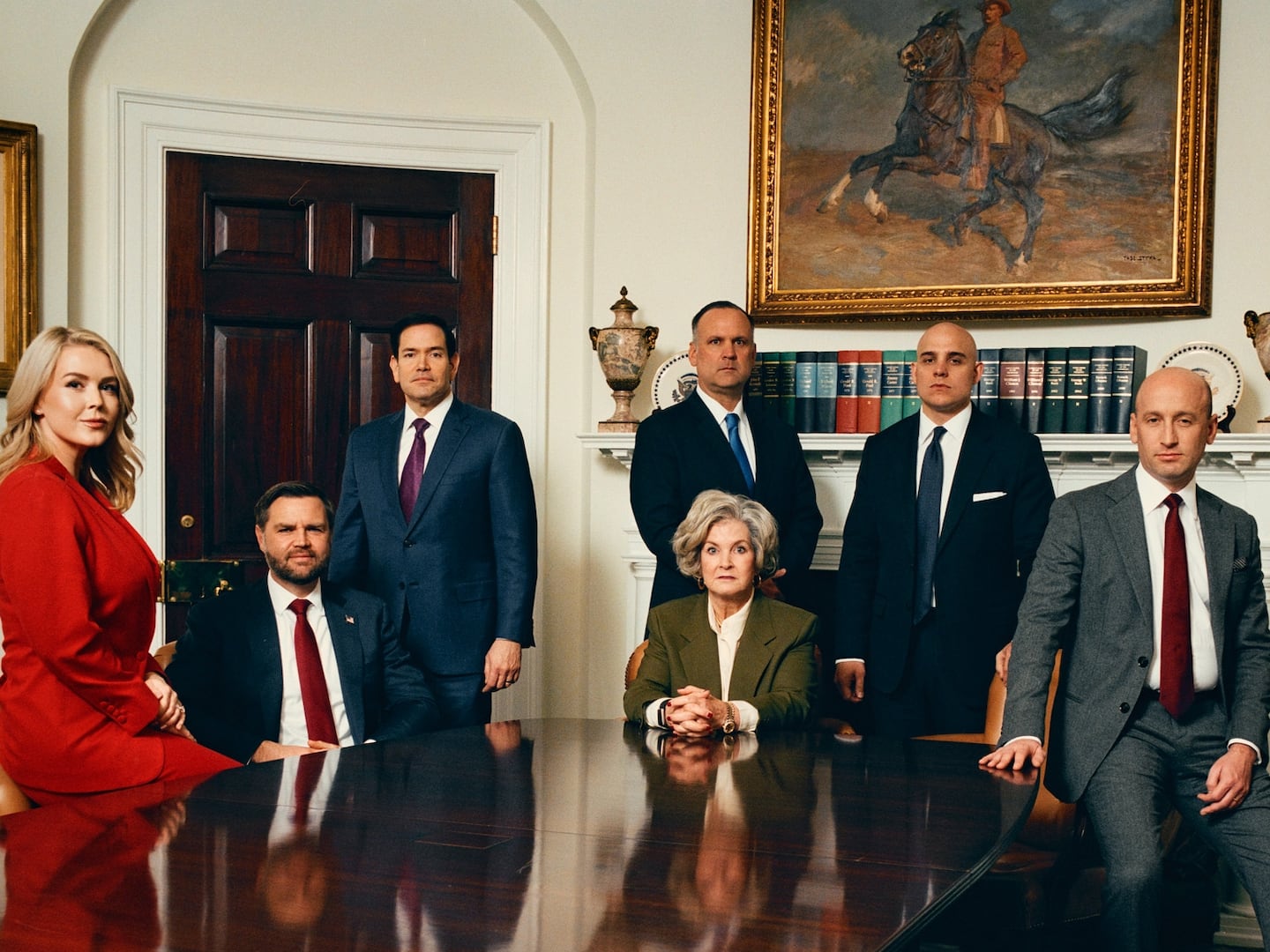Not since Marie Antoinette uttered the words “let them eat cake” (where was her patisserie?) has a term provoked as much resentment among the masses as “let’s take the corporate jet.” Corporate jets have become an irresistible target of public envy. They featured large in the New York Times’s catalog of Governor Chris Christie’s junkets paid for by various moguls.
The Times, it must be said, strained a tad too hard for effect. Christie, they reported, favored the Cessna Citation X: “which, its manufacturer boasts, has exotic wood interiors and a Rolls Royce engine.”
This needs parsing. First, the manufacturer isn’t “boasting.” That’s the specification. Second, the Citation doesn’t have a Rolls Royce engine, it has two. It couldn’t leave the ground on one. And third – this is where the bias begins to sneak into the light - coupling “Rolls Royce” with “exotic wood interiors” is a calculated image association with Rolls Royce cars suggesting that Cessna chooses their engines as a Russian oligarch chooses his automobiles. In fact, half the world’s wide-body airliners have Rolls Royce engines and, I can assure, you their presence on the wings is no guarantee of superior champagne in the cabin.
Then there was the recent exhibition of corporate jet outrage over the number of them reported to have flown into Davos carrying the so-called global thought leaders to their annual festival of mutual congratulation and simulated concern for the state of the planet.
“1700 private jets flying into Davos” screamed the Mail Online, provoking a chorus of outraged peasants. Then it turned out that there were 1,700 aircraft movements, not jets, in the course of seven days. “Movements” means flights, in and out, and they included corporate jets, chartered jets, and jets used on a time-share system. Few of them actually just sat there for a week awaiting their masters’ pleasure – they went on other flights. Fact-checkers finally figured out that rather than 1,700 jets only 200 had actually been involved.
Now it’s perfectly understandable that those of us condemned to only ever take to the air on commercial flights should have an instinctive resentment toward those who never have to line up for a check-in desk behind the family with 15 bags and five screaming kids, have our private orifices scanned for concealed plastic explosives, and suffer the anatomical torture of a coach seat for 12 hours.
Corporate jet envy functions like Newton’s law of action and reaction: The more luxurious the perks of the 1 percent appear, the more outraged the average flier becomes. So here is a warning: in the future the comforts of the privileged are only going to increase. To these people, size matters and there will be more size to envy in taller and wider cabins.
Demand is being driven by increasingly competitive customers. Those who fly private jets don’t want them to be inferior in any way to a commercial jet. And they have noticed that the new and coming generation of commercial jets have three virtues that private jets have so far not been able to match – they are quieter and more fuel efficient, first-class cabins are turning into miniature hotel suites and, crucially, they can routinely fly non-stop between continents.
This is why most of the growth in the market for corporate jets is in the category for airplanes with larger cabins and longer range. Analysts predict that over the next decade the new super-sized jets will represent, in value, 85 percent of the entire market for corporate jets.
For example, the new Gulfstream G650ER, sticker price $66.5 million, will be able to fly nonstop from New York to Hong Kong; the rival French-built Dassault Falcon8X, price $58 million, will fly nonstop from London to Hong Kong. Both can have their swank cabin appointments arranged to personal tastes, including if required, a bedroom.
They will also enjoy a privilege not available on any commercial jet, their own highway in the heavens, what might be called the Low Occupancy Vehicle Lane, or LOV lane. They will cruise at 51,000 feet. Maximum cruise altitude for commercial jets is between 38,000 and 40,000 feet.
The visceral advantage of this to passengers will be a view from the cabin that includes a curved horizon, a true master of the universe perspective equaled only by the now-defunct Concorde supersonic jet. The technical advantages of flying at this height are lower fuel consumption and higher speed, nudging closer to the speed of sound and cutting at least an hour from the flight time between continents.
Nonetheless, the super-sized corporate jets are modest when compared with those favored by the real titans of the sky.
Boeing has already sold at least ten of what it calls the VIP version of its 747-8i, the newest iteration of the venerable 747, which normally carries around 440 passengers but in the VIP “bespoke” form can be fitted out like a palace with the cargo hold used to garage limousines. Boeing doesn’t disclose who these customers are. The 747s are flown as empty shells to a special Lufthansa hangar at Frankfurt where, in great secrecy, the luxury furnishings are added, with a price completed of around $300 million. (The 747-8i has been chosen as the next generation Air Force One.)
Even this, though, is topped by a larger Airbus A380 that has been fitted out to the personal tastes of Prince Alwaleed bin Talal al-Saud, the billionaire Saudi investor. Together with five opulent suites there will be a boardroom, Turkish bath and a small concert hall.
The true spiritual father of this scale and style of flying was a far more publicly flamboyant figure, Malcolm Forbes, the owner of Forbes magazine. In the 1980s Forbes flew around in a converted Boeing 727, which in its airline configuration carried between 150 and 200 passengers. Forbes had his own livery including his name for the airplane, writ large: Capitalist Tool. There were no suites or Turkish baths, but Forbes delighted in sharing his extravagance with A-list names from business and the media who joined him on well-publicized international junkets.
These days those in the U.S. who convert commercial jets to their own purposes keep far lower profiles. Google founders Sergey Brin and Larry Page, for example, were not comfortable sharing the public terminal at San Jose airport so they are now building their own $82 million terminal complex, where their fleet of jets will occupy five of the seven hangars. Brin, Page and their executive chairman Eric Schmidt are frequent users of their own and company airplanes, often for intercontinental trips.
For the super-rich, personal privacy (and safety) is as strong a motive for owning a jet as the utility it can provide for them and their executives to schedule trips efficiently at any hour of the day or night according to time zones. This is a very different ethic from those whose sense of entitlement includes a luxuriously fitted jet as simply another accessory in their lives among the top 1 percent of the top 1 percent – people who are most likely to cause offense with their natural imperiousness.
(An egregious subset of this group includes people like Paris Hilton’s 20-year-old brother Conrad, arrested this week, who had to be restrained after allegedly threatening to kill a British Airways flight attendant and screaming obscenities at passengers, and the daughter of the boss of Korean Airlines who assaulted a steward for serving her macadamia nuts in a packet instead of on a plate. People like this should definitely be confined to private jets.)
Between the practical case for corporate jets and the exclusive, rarified world of non-practical personal indulgencies lies the often-controversial zone of the invited guests, a la Chris Christie. Leaving aside the ethical issues raised by accepting hospitality from people whose interests he may find himself dealing with as a governor, his case raises a rather more physical problem for which we might have some sympathy – his girth.
Christie’s waist measurement is, it is alleged, around 56 inches, although it fluctuates. (For comparison I offer Henry VIII, who came in at 54 inches and, like Christie, was famously choleric about anything that fell short of maximum creature comforts, and would certainly have wanted a corporate jet, had one been available.)
At least it is unlikely we will ever see Christie advancing down the aisle of a coach class cabin, where the seat width is seventeen and a half inches. Even a business-class flatbed would be seriously challenged and a first-class sleeper suite would barely do it. I would, therefore, argue that as much for the benefit of fellow passengers as for his own Christie should be encouraged to stick with whatever rides he can get.
The same goes for other, albeit more svelte figures. Hillary Clinton, for example, is rarely if ever seen riding a commercial jet. And in all fairness the disruption that can be caused to other passengers, both at the airport and on the airplane, by the arrival of a high-profile politician, their security detail, and their phalanx of assistants and advisers is reason enough for them to charter a jet or, if they feel that there is no ethical compromise involved, take the offer of a jet on loan from a supporter.
As so often, it is Warren Buffett, the world’s third-richest man and one of the most frugal of billionaires, who sets the standard for executive decency, in the way he has balanced the utility of personal jets with corporate ethics. You could say this comes naturally for a guy who runs a business, Berkshire Hathaway, valued at $358 billion, with a headquarters staff in Omaha of just 25 people.
In the 1990s Buffett and his top executives used NetJets, which offers a fleet of corporate jets on a time-share basis – customers buy from 40 to up to 400 hours a year for their own use. After three years of being a customer, Buffett bought the company, and it became another part of his conglomerate.
In this he showed a great deal more judgment (as well as business acumen) than the three Detroit auto executives who, in 2008, took separate company jets to Washington to plead for a $25 billion bailout from taxpayers. In doing so they created a public relations disaster so contagious that it, alone, virtually stopped the sales of all corporate jets for a while—a blow from which the airplane makers are only now beginning to recover. Between now and 2024 the world’s corporate jet makers, mainly based in the U.S., Canada, Brazil and France, are expected to deliver around 9,500 new airplanes.
All of this means that private jet envy is here to stay. Inequality is as firmly established in the sky as it is on the ground. The general populace will always be infuriated by the comforts of the elite, never more so than in the air. As Scott Fitzgerald wrote in a 1926 short story, The Rich Boy: “Let me tell you about the very rich. They are different from you and me.”
When Fitzgerald wrote those lines the airplane was still a relatively primitive machine and flying was perilous. Within a decade things had changed.
Adapting airplanes for corporate comfort – and promotion – began almost as soon as the technology to do it arrived. The world’s first all-metal airliner, the Boeing 247, normally carried 10 passengers. In 1935 one was sold to the Phillips Petroleum Company as an “executive aircraft.”
Frank Phillips, an Oklahoman who founded the company, ordered that the cabin should have additional sound-proofing and it was equipped with a refrigerator, writing desk, walnut cabinets, stuffed armchairs, and sleeping berths. Phillips had been awarded the title of Osage Eagle Chief by the Osage Indians and had the Indian dialect for the title, Wah-shah-ahe-hlu-ah-ki-he-kah, painted on each of the airplane’s two engines.
Ever since then, it could be argued, a special kind of airplane has been employed to make very clear that there is a permanent difference between the chiefs and the Indians.





